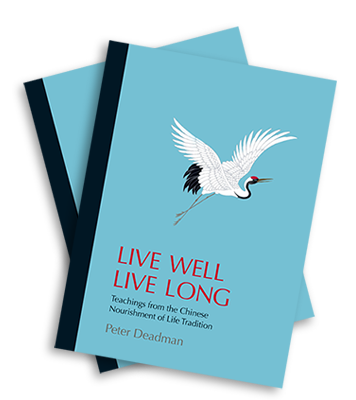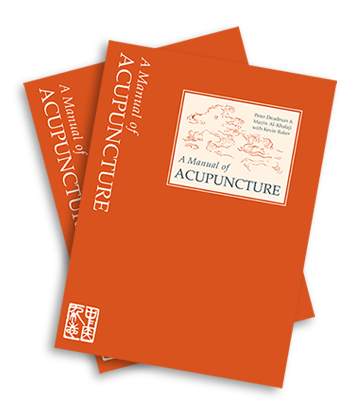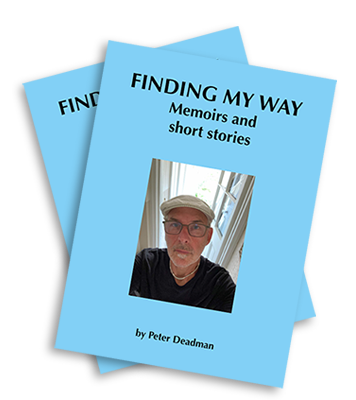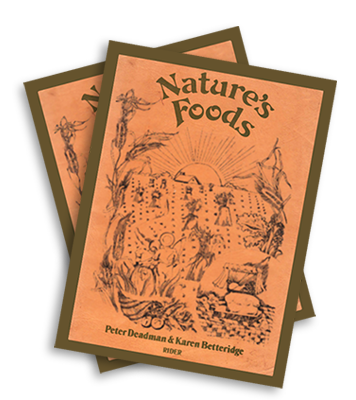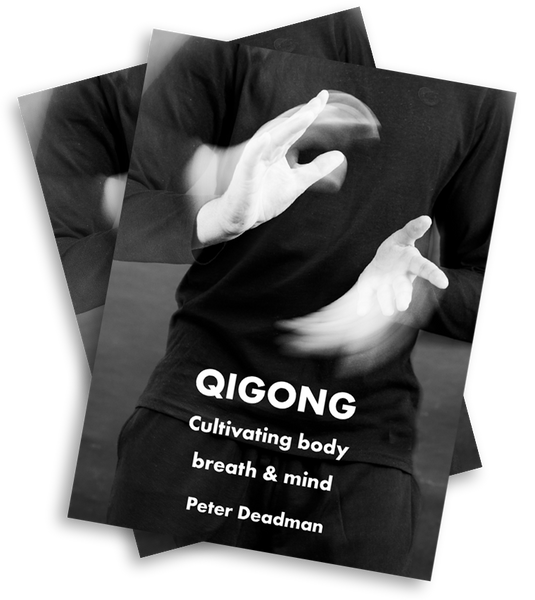
Qigong: Cultivating body, breath & mind
Two years in the writing, this new book covers the underlying philosophies and history of the many Chinese practices that come under the broad umbrella term qigong. It draws both on the traditional wisdom and modern understanding of body, breath and mind cultivation. There are links to dozens of videos demonstrating a whole range of qigong practices.
some reader reviews
Read all the reviews
Click below to expand and read reviews
'How do you write a good book on qigong? Having read many on the subject, I have concluded that writing on this subtle, experiential art that originated from another culture can be devilishly hard. This is perhaps not surprising given that its central tenet - qi - remains so richly controversial. Existing texts on the subject tend to slip into recognisable types. For instance, the uber-traditional treatments of the subject - often written by Chinese authors - that give instructions in the original, esoteric code (‘Guard the qi in the cinnabar field’ etc). This approach can be challenging for Westerners without any background in traditional Chinese culture or language. The enigmatic tone of such instruction can, however, serve a useful function - forcing the student to think deeply (in the spirit of Confucius’ single corner of a handkerchief or Bruce Lee’s ‘finger pointing to the moon’). Then there are the glossy, photo-heavy ‘how-to’ texts, often to be found in cut-price bookshops, in which an attractive model dolled up in silk pyjamas is photographed in various positions that betray they do not have a clue what they are doing. I wonder if readers of these books have ever found their way to anything useful. Another type, often written by over-enthusiastic Western adepts, presents high-level qigong practices together with disclaimers that on no account should these be learnt from a book; I suspect that the material in these books has often been lifted directly from a source text or passed on verbatim from a teacher without the requisite practice to gain mastery of the practices.
This text is different. The author, despite his huge experience in the East Asian healing arts, is up-front about his limitations as a non-Chinese reader, and straight about the fact that - by definition - the book constitutes a snapshot of ‘how I understand and practise at the moment’. Along with this humility goes a playful sense of humour which, without being flippant, takes gleeful aim at the preposterous aspect of these arts (How many qigong practitioners does it take to change a light bulb? One hundred - one to change the light bulb and 99 to stand around muttering that’s not how we do it in our school’). Refreshingly, the information is imparted not from a lofty, other-worldly ivory tower, but as practitioner to fellow practitioner. That said, the text resounds with the author’s command of his subject matter and his delightful clarity of prose (for example, ’Our sky, our heaven, is yang - the expanding, spacious, bright ruler of our daily and seasonal changes’).
Humility and humour aside, one thing that marks this book out as a keeper is its effortless synthesis of intellectual rigour with transmission of authentic traditional practice. In a spirit similar to the author’s Live Well, Live Long, traditional wisdom is juxtaposed with modern scientific knowledge in a way in which each can illuminate the other. A solid section on fascia and qigong, for instance, explains how the fluid, elastic movements of qigong can counteract the inflammatory fascial congealing caused by a sedentary lifestyle (and which, terrifyingly, can become the environment in which cancer thrives). A section on mental attitude during standing qigong sees the author recommend consciously befriending our microbiota, evidenced by recent research that Tibetan monks who meditate have healthier microbes than their neighbours who eat exactly the same diet. There are many such discoveries for the curious reader, such as Todd Hargrove’s ‘brainbody maps’, the importance of proprioception, Confucian ritual dances or Feldenkrais’ parasitic tension of unnecessary muscles.
The book is divided into chapters on Fundamental theories, Cultivating the body, Cultivating the breath, Cultivating the mind and emotions, Yinyang in qigong, History of selfcultivation practices, and About practice and other reflections. Appendix-like later chapters include diagrams of the main acupuncture points, pointers towards relevant research and further reading. For those focused on practice, the traditional directions for postural alignment are presented in full, along with elucidation of essential foundational concepts such as song/ release, the six harmonies and the kua. The author drills down into these instructions far beyond the terse source texts of the ‘taiji classics’; the resulting explanations will enrich the practice of even the most seasoned qigong player. Courtesy of this book I am currently working at bringing lateral widening of the sacrum into my standing practice. Some nuggets will resound long after reading, such as, ‘The shoulder blades, like the sacrum, are downward pointing triangles and it can be helpful to feel all three releasing downwards at once.’ The author’s half century of exposure to meditation means that this solid grounding in the physical aspects of practice is amply supported by skilful treatment of its mental aspects.
The extensive discussions on qi will be extremely useful to acupuncturists. The fundamental theory section represents a solid primer on the subject and is both rigorous yet inclusive of aspects that elude capture by concrete language. Given the author’s pedigree, the intersection of acupuncture and qigong is never far from the surface - whether pondering the origins of acupuncture in the Great Flood, or pointing out that the sensations of warmth, tingling and throbbing felt during qigong represent the same ‘arrival of qi’ that is the desired outcome of acupuncture needling; physical directions for practice are also informed by a rich understanding of the jingluo (‘Six acupuncture channels pass through the toes, so we want to keep them alive and strong’).
The USP of this book is arguably its multi-media aspect. A formidable 12 hours of videos are included that, while not entirely taking the place of a teacher, constitute far more than a casual toe-dip into qigong practice. In fact, a student who immersed themselves in this content could make substantial progress in their practice. The videos focus on fundamental loosening, standing and breathing practices, specific zang organ ‘gongs’ as well as more refined physiological pointers like releasing the shoulders, softening the tongue and turning the waist. The videos work synergistically with the text to provide a clear guide for practice.
The book is liberally sprinkled with quotes in which martial artists, philosophers, scientists and artists of every description have been assembled to contribute to the elucidation of qigong practice. Whether short and pithy or more extensive, the quotes are organised down a side-bar of the spacious text, thus gathering into one place a corpus of extremely useful material. The voices are eclectic, and see Wang Xiangzhai (the founder of I Chuan) next to Leonardo da Vinci, rubbing shoulders with biomechanist Katy Bowman, joined by Mr Miyagi from The Karate Kid … you get the picture. I appreciated the inclusion of selected - previously unpublished - personal comments from qigong practitioners, for example this cracker from Claudia Citkovitz: ‘Qigong is bodywork I can do on myself, every day, for free. I watch in awe as my body teaches itself exactly the geometry it needs today, to swim strong and straight in currents of gravity and time.’
I appreciate the real-world pragmatism of this book. It is for qigong practitioners who live in the world - people with jobs, people who get tired, who may be sceptical of flaky Orientalist claptrap and people who have other interests beyond qigong. It does not silo qigong off from all other forms of exercise as if it was the only game in town, but rather helps the reader to understand how this system of cultivation might be used to improve health and wellbeing alongside other activities. As part of this, the author takes us on a deep dive into movement itself, showing how mindful physical practice of the qigong-type represents a vital counterbalance to the epidemic of sedentary distraction on the one hand and the high stress extremes of the fitness industry on the other.
I have trained with some high level teachers of taiji and qigong and have no hesitation in endorsing this book (and Peter’s qigong teaching more generally) - it is up there with the best of them. It will be of great use to those interested in taking up qigong, as well as those with an existing practice. I know many patients who dutifully attend their local qigong or taiji class but come away with questions beyond the basic choreography - questions to which their teacher does not always have answers. For these people, this book will be a boon. For those of us engaged with the East Asian healing arts, its inclusion in our libraries will need no further recommendation.
The author finishes the book with a fairy tale, ‘The Black Pearl and the White Pearl’. This playful signoff encapsulates the concerns at the heart of this book - the life-nourishing power of qigong in the life of real human beings. And with that said, it is time to close this laptop, stretch out, loosen my joints, relax down, breathe, soften, lengthen and gong some qi.'
Daniel Maxwell, from JCM issue 134.
"As a qigong teacher with two decades of experience – and a practising acupuncturist – I found this book to be an invaluable resource for anyone interested in acquiring a greater understanding of the historical, cultural, and medicinal aspects of qigong practice.
Deadman skilfully weaves together references to qigong and acupuncture, creating a unified approach that beautifully showcases the synergy between these two modalities. Whether you’re a novice looking to explore qigong safely, or an experienced practitioner seeking refined insight, this book caters to all levels of interest and expertise.
While the book is not dominated by excessive illustrations, the ones included are artfully incorporated and instructive, complementing the text perfectly. Additionally, Deadman provides well-referenced third-party sources, both in text format and through video links, offering valuable visual aids to enhance understanding.
Deadman manages to cover numerous aspects of qigong practice including fundamental theories of yin-yang, posture, breathing, emotions, as well as information about ancient teachers and styles of qigong. There are personal reflections, research information, and even a fairytale which adds to the rich tapestry of information provided.
Yet despite its comprehensive subject matter, the book reads easily, demonstrating Deadman’s deep understanding and appreciation of qigong’s beauty, art, and healing qualities. Each chapter is self-contained, making it a valuable reference book while also serving as a comprehensive guide from start to finish.
The well-thought-out presentation, structured organisation, and informative yet succinct writing style make Qigong: Cultivating body, breath & mind an enjoyable and enriching read for anyone interested in the profound art of qigong."
Heather Reade, British Acupuncture Council.
“Drawing on his 50 years of training in Chinese medicine, Peter Deadman has crafted a rich, comprehensive, and timely book on qigong. Written and laid out beautifully, it comprehensively and insightfully weaves together its core principles, its roots in traditional Chinese medicine and culture, the scientific evidence of its many therapeutic benefits, and a practical set of training skills including links to multiple online training programs. This book is an invaluable resource both for those wish to begin to learn about qigong, as well as those who are already deeply committed to these practices."
Peter Wayne, PhD., Associate Professor of Medicine, Harvard Medical School - Author of Harvard Medical School Guide to Tai Chi
“With this book and accompanying videos, people will learn authentic qigong and will develop the capacity to judge whether any instruction they receive elsewhere is solid, legitimate and grounded in East Asia’s rich and profound health culture. Peter Deadman has written THE qigong book, a work that is as encyclopedic as it is practical, as wise as it is humorous, and as rooted in science as it is steeped in ancient common sense.”
Kaz Wegmuller, Author, Acupuncture for Curious People
“Peter Deadman has written a thorough and approachable book in which he makes connections between qigong and modern research on exercise, health and physiology in a way that enhances and elevates our understanding. The accompanying videos give the reader an opportunity to immediately experience and practise a variety of qigong exercises, thereby bridging the gap between theory and practice.”
Tom Bisio , Founder Internal Arts International
“Very comprehensive, clear and accessible. I like the blend of East/West, traditional/modern scientific research and you include many important points for practitioners of all abilities to observe in their training. Full of good stuff, well rounded and exuding the deep value of a balanced approach.”
Sam Moor, Tai chi teacher
Take a sneak peak at what's inside the book
VIEW PREVIEWPurchase Options
Currently this book is available to purchase in the UK, Germany and North America.
- But will also be available soon in the following regions:
- Australia & New Zealand: China Books
